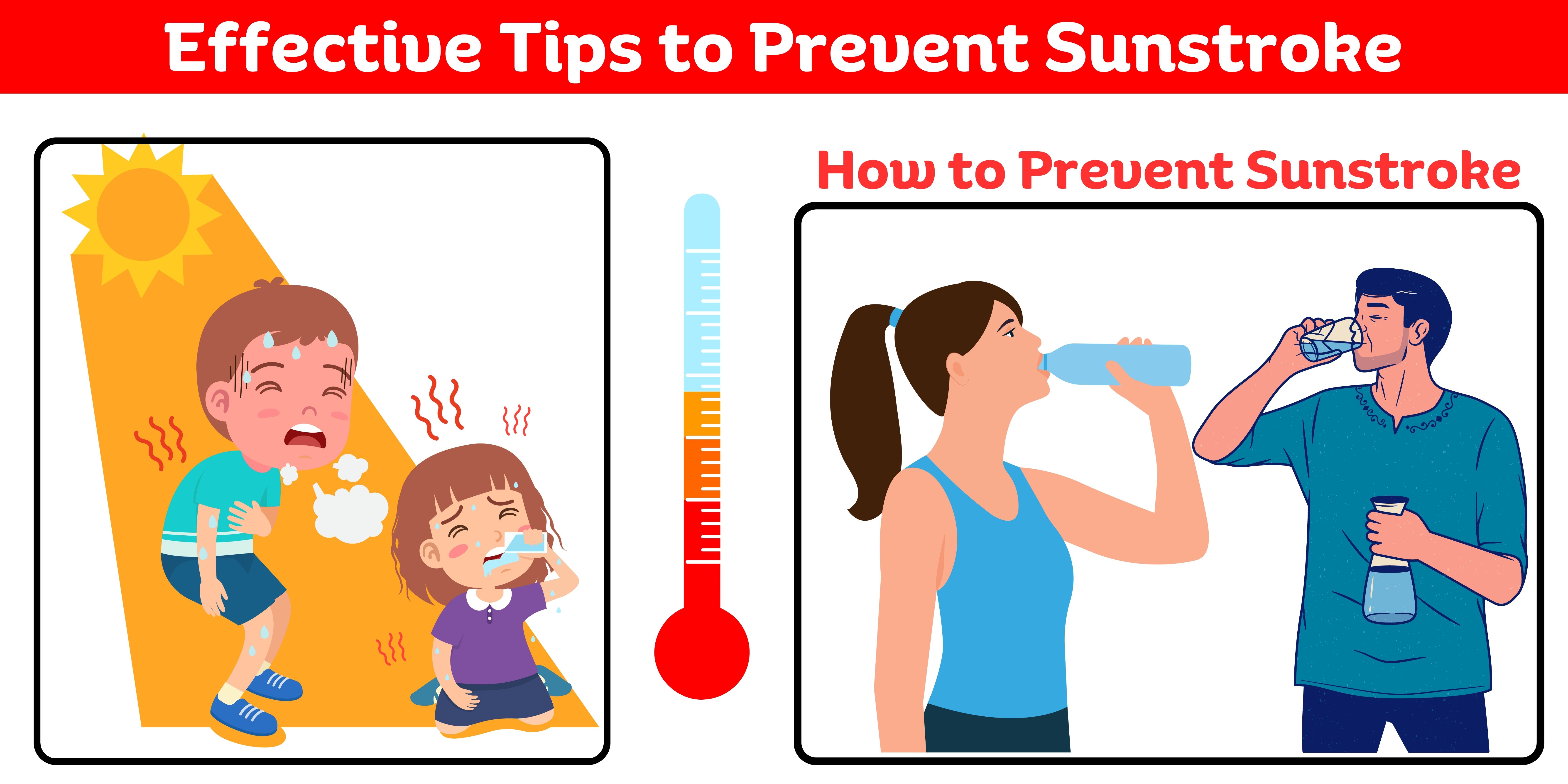Effective Tips to Prevent Sunstroke
Sunstroke, also known as heat stroke is a serious condition that can occur when the body’s core temperature rises to dangerous levels due to prolonged exposure to high temperatures, direct sunlight, humidity, and lack of fluids. High temperature and dehydration can adversely impact and damage vital organs such as the brain, heart, kidneys, and liver. It causes heat exhaustion which is a less severe form of heat illness but can still be dangerous. Its symptoms include heavy sweating, dizziness, nausea, and headache.
Moreover, prolonged exposure to the sun can also cause sunburn and skin problems. Sunstroke requires immediate medical attention and must not be taken lightly. Here are some tips to prevent sunstroke:
Stay hydrated:
Drinking plenty of water and electrolyte-rich fluids can help you stay hydrated and prevent dehydration, a common cause of heatstroke. Avoid alcoholic or caffeinated beverages, as they can cause dehydration.
Wear protective clothing:
Wear light-colored, loose-fitted, and breathable clothing that allows air to circulate and sweat to evaporate. Avoid wearing tight clothing made of synthetic materials that can trap heat and sweat. Wearing a cap, hat, and sunglasses can offer protection to head, face, neck, and eyes from the harsh sun‘s rays.
Stay indoors during peak sun hours:
Avoid being outdoors during the hottest part of the day i.e. usually between 10 a.m. and 4 p.m. In case you have to go out seek shade
under trees, umbrellas, or canopies to protect yourself from direct sunlight.
Using sunscreen:
Apply a broad-spectrum sunscreen with at least SPF 30. It protects your skin from the harmful effects of UV rays. It should be applied 15-20 minutes before going out in the sun and should be reapplied every two hours or more frequently if you are sweating or swimming.
Taking breaks in cool and shaded areas:
Take frequent breaks in cool and shaded areas to rest and let your body cool down.
Avoid strenuous activities:
Avoid doing strenuous activities during the hottest part of the day. Plan workouts, running, jogging, and allied activities early in the morning or in the evening when the temperature dips.
Monitoring symptoms:
Know the signs and symptoms of heatstroke, such as elevated body temperature, rapid heartbeat, headache, nausea, dizziness, vomiting, and confusion. If you experience any of these symptoms, you must seek medical attention immediately.
By following these suggestions, you can help avert sunstroke and stay safe in the sun.
For Such More News






